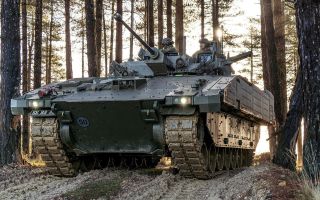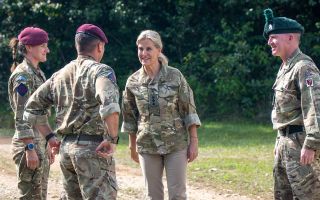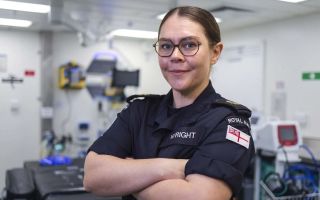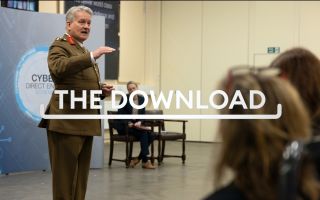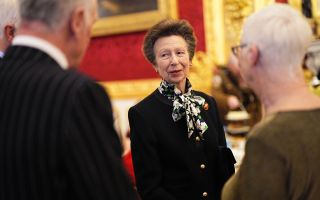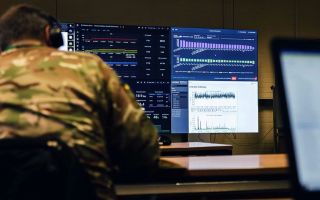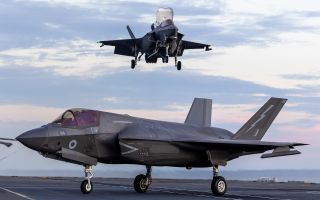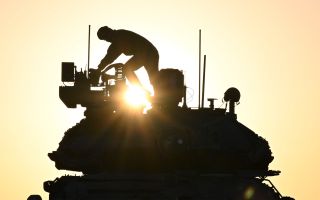They Were There: The WW2 project by the maverick pilot who flew under Tower Bridge
A legendary RAF pilot who goes viral every year for the daring moment he flew his Hawker Hunter through London's Tower Bridge in April 1968 has a unique Second World War project few people know about.
Before the Tower Bridge incident, Flight Lieutenant Alan Pollock's partypiece for flypasts was to fly upside down, parallel to the runway with his tail fin a few feet off the tarmac which, says son John Pollock, made getting in a car with his father a scary prospect as the maverick pilot "didn't really rate cars".
It is that same daredevil attitude that helped Flt Lt Pollock make aviation history on 5 April 1968 when, furious with the lack of celebrations for the 50th anniversary of the RAF, he flew through Tower Bridge in his Hawker Hunter, just missing a red bus in what he describes as a heart-stopping moment.
While the world has always been interested in the whens and whys of the daring event, the pilot has never revelled in his notoriety, preferring to focus on how he can help others – in particular those in the military community.
Now 89, Flt Lt Pollock's They Were There fundraising project is unique and 40-plus years in the making.
Named to honour all who fought on our behalf during the Second World War, the charitable project consists of 300 prints of the painting Battle of Britain VC by Robert Taylor, each signed by someone who was present at almost every major event on the Allied pathway to victory – that adds up to 300 signatures from more than 30 nationalities.
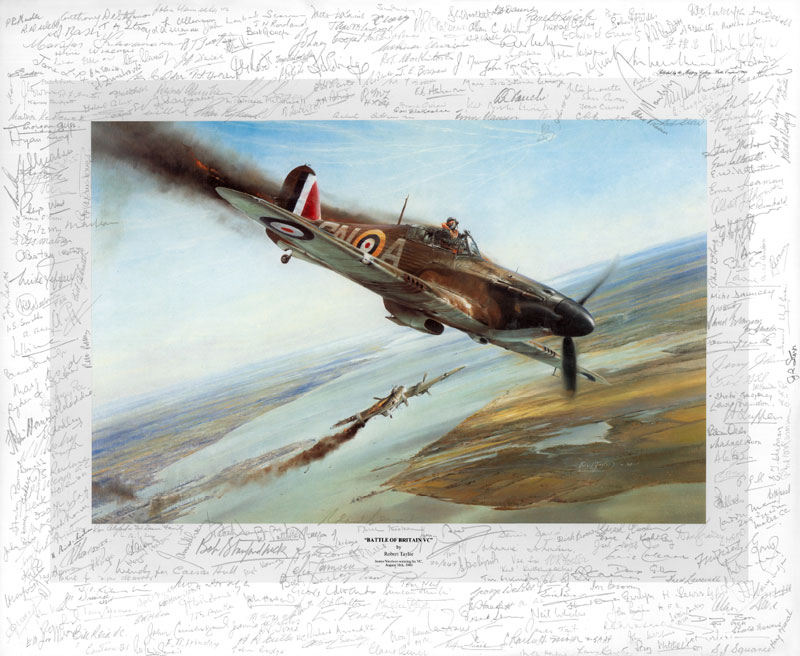
All profits – at least half of all proceeds – will be donated to service benevolent charities such as the RAF Benevolent Fund, the Royal Naval Benevolent Trust and the Army Benevolent Fund.
Flt Lt Pollock, known for having a "bloody-minded Irish/Scottish streak", gathered signatures from about 300 men and women, including Flight Lieutenant John Cruickshank, the last living Victoria Cross recipient from the Second World War.
Who else signed it?
The collection features signatures from 14 Victoria Cross recipients, including Group Captain Leonard Cheshire and Petty Officer Tommy Gould, along with recipients of two George Crosses, 60 Distinguished Service Orders and many other medals, including 69 Distinguished Flying Crosses.
Notable women include Allied intelligence agent Jeannie Rousseau de Clarens, pioneering ATA pilot First Officer Lettice Curtis and the model for the wartime cartoon heroine "Jane" Chrystabel Leighton-Porter – referred to as "Britain's secret weapon" by Winston Churchill.
Other signatures featured are that of Wing Commander Cliff Alabaster, an officer who guided missions against vital enemy targets, Chindit leader Brigadier 'Mad Mike' Calvert, St Nazaire Raider and Colditz prisoner of war Captain Micky Burn and SAS original and Belsen liberator Lieutenant Colonel Johnnie Cooper.
The full list can be found here.
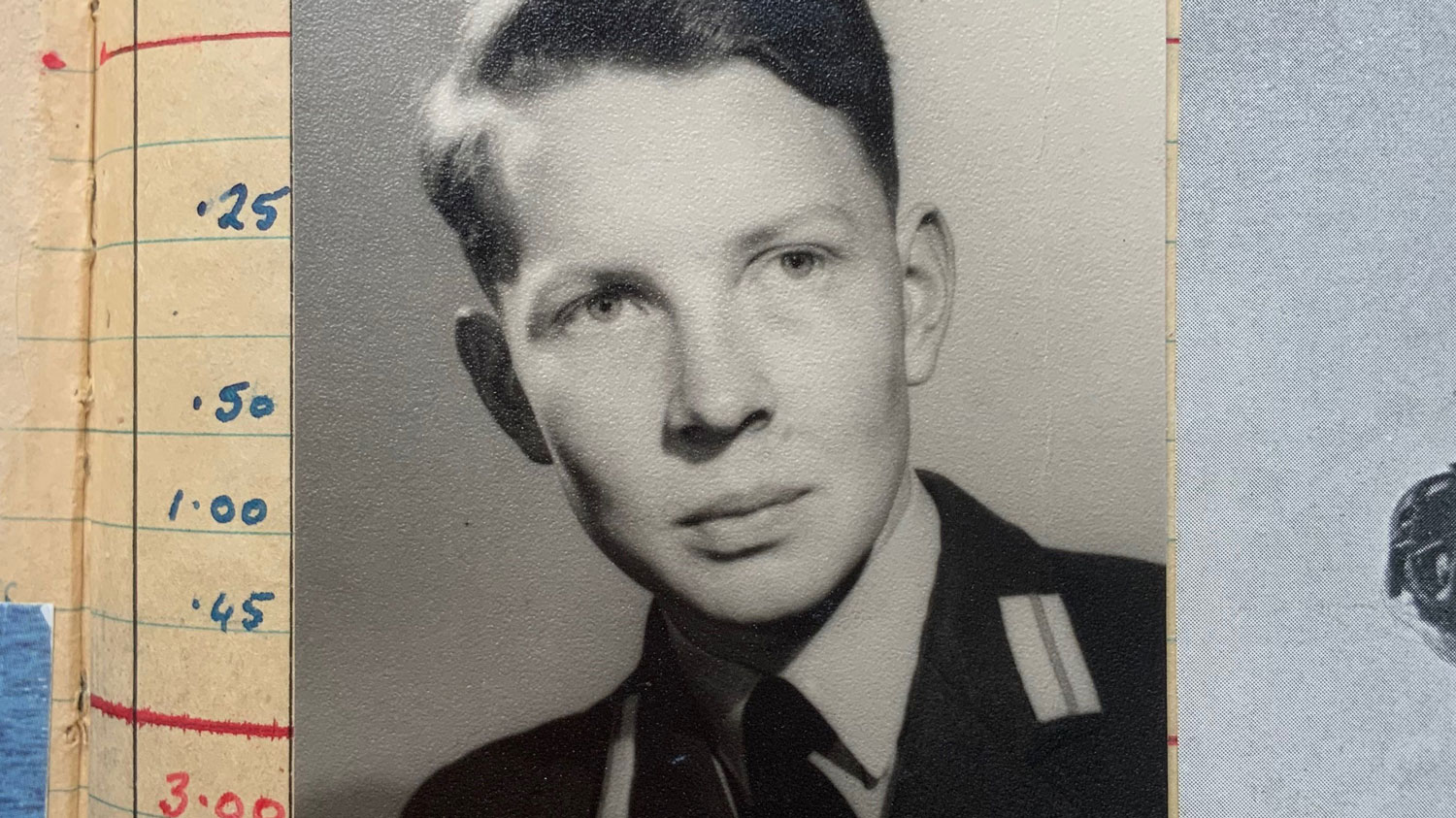
Speaking in 2020, Flt Lt Pollock said: "I was impressed with each and every one of them.
"You know, what they had seen and their wartime experiences, and also what many of them had done after [and] before the war.
"I had slightly done my homework to pick who I was interested in, and some of that was planned in a way to try and get the width of the coverage of the war.
"I think it ended up roughly... 40% Air, 30% Army and 20% Navy and 10% civilian and resistance."
As the pilot also explained, the project doesn't just celebrate those who were already in the spotlight.
Unsung heroes and widows also feature, as Flt Lt Pollock's son, John Pollock, explained to BFBS Forces News, saying: "He was conscious that while there were stars like Bader and people like that, there were also technicians and people on the ground and the people who put out fires – they're represented too.
"That was very important to him, that he had that wider, deeper representation of the people who were there."
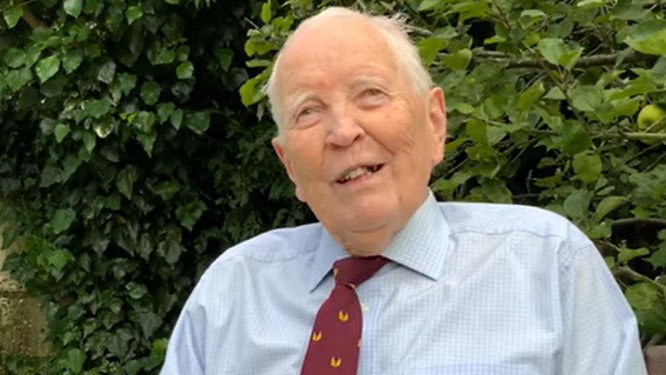
It runs in the family
Flt Lt Pollock's own father, Lieutenant Colonel John Pollock, was the first British officer into Rome when the city was liberated on 4 June 1944 as he had been embedded with the American 5th Army.
Of his grandfather Mr Pollock said: "He ran the Union Jack up at 10 o'clock in the morning in Rome to great happiness among those who had been under Mussolini's boot."
Continuing the family's legacy of military excellence, Flt Lt Alan Pollock is regarded by many as one of the leading pilots of the post-Second World War era.
The aviators who as children were inspired to join the RAF after watching brutal dog fights in the skies above them and seeing aircraft debris scattered on the floor.
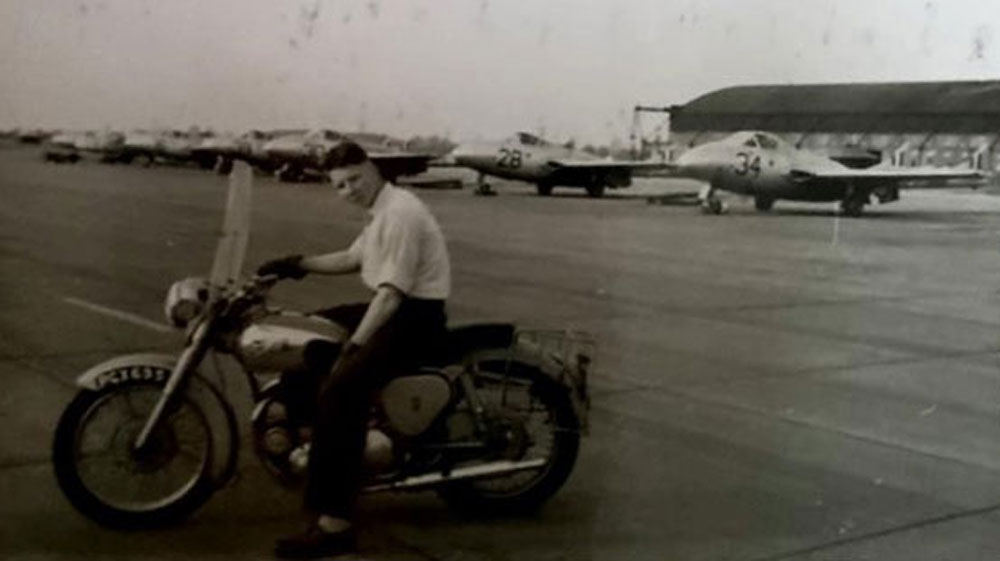
In 2020, while recalling his memories of being a boy in London during the Second World War, Flt Lt Pollock said: "Every young boy [wasn't] just happy at getting a bit of shrapnel but it had to be warm shrapnel because often that came down and it was elsewhere you know from the anti-aircraft guns as well, I suppose.
"The shock was to pick it up and almost have it too hot in your hands."
The young Londoner was so keen to emulate his boyhood heroes, such as The Few and other well-known RAF legends, that he initially lied about his age to try to join up.
At first, the RAF "pursed their lips" due to the youngster's age, but when he threatened to go off to the Fleet Air Arm instead, the Air Force changed its mind and accepted him.
Mr Pollock believes one of the reasons his father became so committed to his They Were There project is because of the time he spent during his service with senior officers, many of who had fought in the Battle of Britain.
The poignant print of the Battle of Britain painting captures a significant moment from the first major air battle.
It depicts James Nicolson, the only member of Fighter Command to receive a Victoria Cross, as he escapes from his Hawker Hurricane on 16 August 1940.
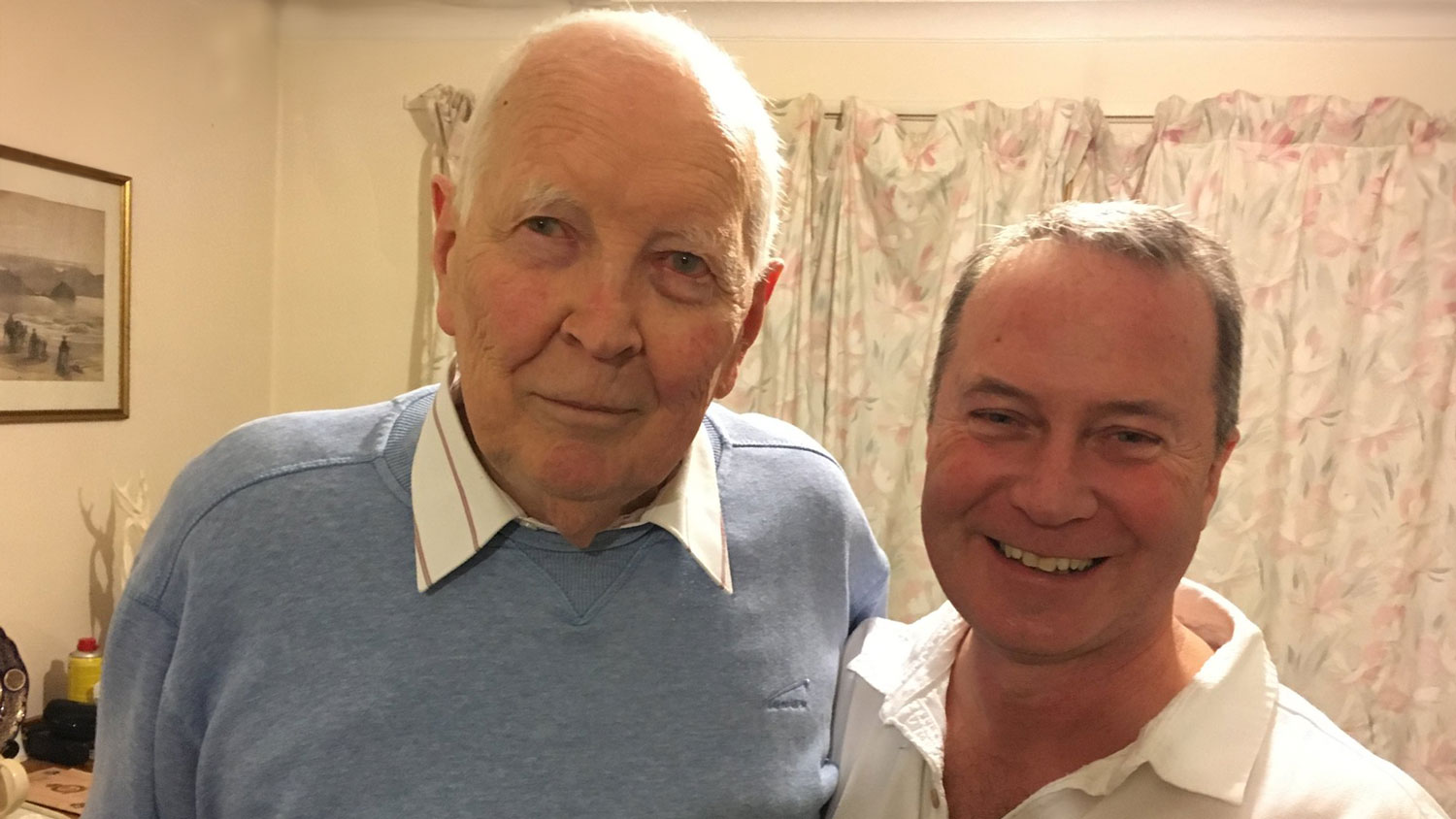
Fighting injustice
The veteran pilot decided to take on the They Were There project to raise money for war widows when he discovered just how little they received per week.
Mr Pollock said: "He became extremely annoyed about that and campaigned among those who stripped off outside. I think it was a Labour thing, and a bunch of pensioners got their kit off and swam outside Blackpool.
"Anyway, [the government] picked up that it would be politically very embarrassing with a number of anniversaries coming round, so they boosted the War Widows' pensions a bit to take that off the political agenda."
However, with so many prints remaining, Flt Lt Pollock continued his project, which by now had become a hobby, and focused his attention on raising money for the Tangmere Military Aviation Museum as a fundraiser.
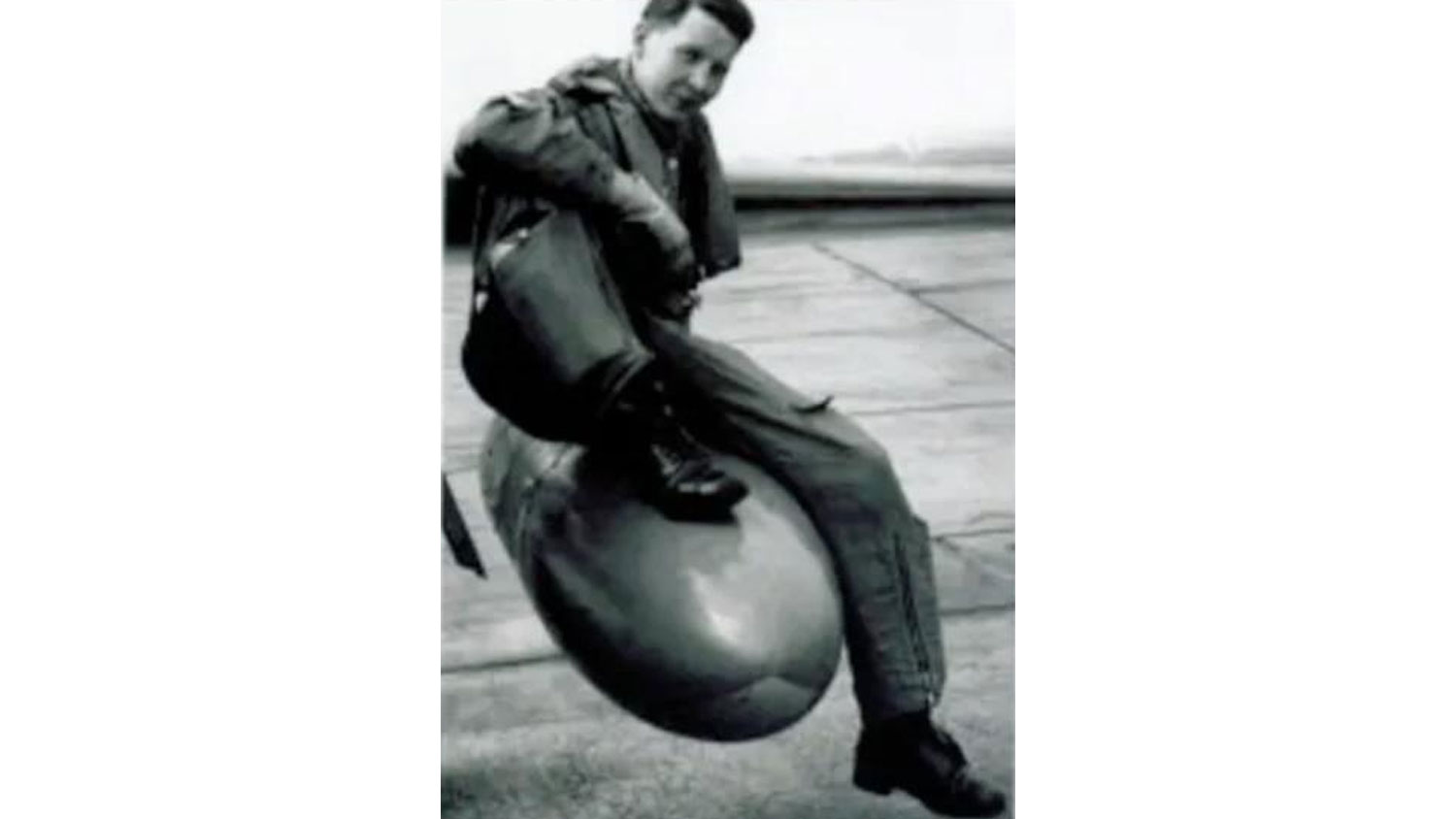
Today Mr Pollock says his father hopes the sale of these unique prints will raise money for people trying to help the military community, saying: "He doesn't really care if it's a charity or not, if it's doing charitable works.
"There's a guy down in Poole who apparently rigs motorbikes [for veterans] so they can get on their motorbike again.
"Which would you rather the money went to? A massive mega charity or the guy putting guys in wheelchairs on bikes?"
A life-changing moment
Mr Pollock explained how the split-second decision that made his father a hero in aviation circles had a devastating effect on the pilot's "stellar" career, saying: "He didn't say this, but the implication from many, many people in the Royal Air Force and around that time was that he was the top gun of that generation, not just in this country, but in America.
"So when he bailed out... it was the end of everything."
When Flt Lt Pollock's life was turned upside down due to an act of defiance, he chose not to turn his back on the military community.
In fact, he doubled down, spending tens of thousands of hours travelling tens of thousands of miles to track down people whose contribution to the Second World War gave us the freedoms we enjoy today.
All he needs now is those who help make the Tower Bridge incident go viral every year to discover his They Were There project and, hopefully, the military community will benefit from the sale of his prints.

